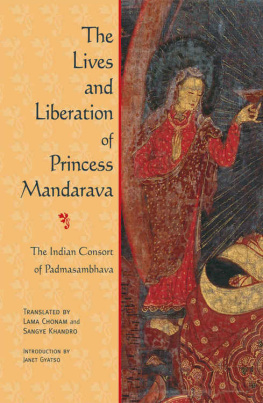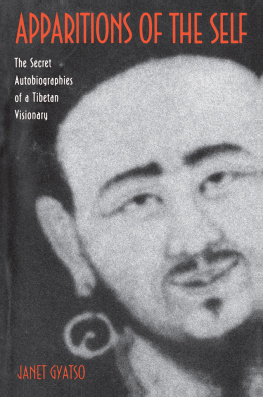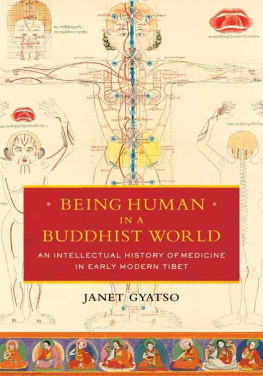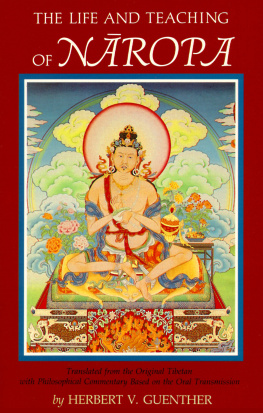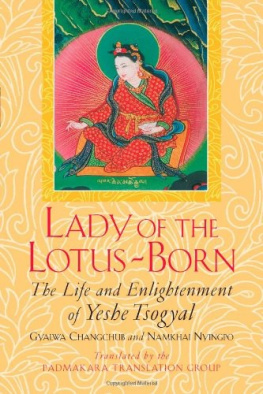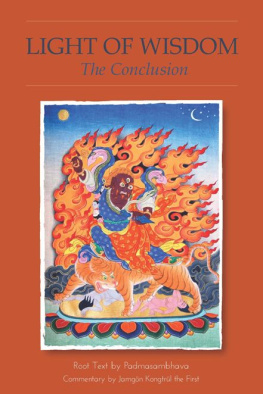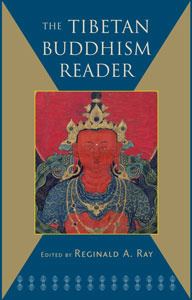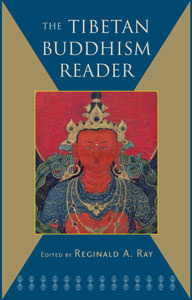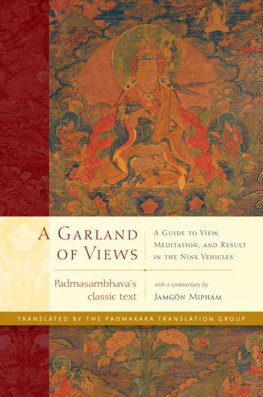The Lives and Liberation of
Princess Mandarava

T HIS LUCID TRANSLATION of a rare Tibetan treasure text makes available for the first time to Western readers the remarkable life story of Princess Mandarava. As the principal consort of the eighth-century Indian master Padma sambhava before he introduced tantric Buddhism to Tibet, Mandarava is the Indian counterpart of the Tibetan consort Yeshe Tsogyal.
Lives and Liberation recounts her struggles and triumphs as a Buddhist adept throughout her many lives and is an authentic deliverance story of a female Buddhist master. Those who read this book will gain inspiration and encouragement on the path to liberation.

An extraordinary story from the heart of Tibetan religious culture... replete with messages of encouragement... [that] presents its readers with a complex image of a woman engaged in a difficult process of self-cultivation.
Janet Gyatso, Amherst College
This is a work that many American Buddhists will cherish. Perhaps it is a vision of what Buddhism in the twenty-first century will become. Admirably translated.
The Quest

L AMA C HONAM , born in Golok in eastern Tibet, is an ordained master teacher of the Nyingmapa school of Vajrayana Buddhism.
S ANGYE K HANDRO is a noted translator of Tibetan Buddhist texts. She resides in Oregon.
J ANET G YATSO is the Hershey Professor of Buddhist Studies at Harvard University.
Table of Contents
Translators Dedication
Dedicated to the Dudjom Sangyum, Rigdzin Wangmo, a great primordial wisdom dakini living in this world today.
A s spiritual practitioners we receive encouragement and inspiration by reading the lifestories of great and sublime teachers, and the inspiration we receive from their exemplary lives allows us to progress more swiftly along the path to liberation. Because the appearance of everything we can know and experience depends on causes and circumstances, ordinary individuals embarking on the path must do so through a gradual process. Princess Mandarava, however, already liberated from the cycle of suffering and perfectly omniscient, was not an ordinary individual. She intentionally emanated into realms of ordinary existence in order to inspire beings and lead them through this gradual process, teaching them how to practice through her example. The pages of this book present, for the first time, an English translation of the precious treasure text of Padmasambhava called The Lives and Liberation of Princess Mandarava. The accounts of Mandaravas remarkable lives illuminate the experiences of a great wisdom dakini who inspired everyone she met, turning their minds irrevocably toward liberation.
Princess Mandarava of Zahor is often depicted at the side of Guru Padmasambhava opposite his other principal consort, Kharchen Yeshe Tsogyal. Princess Mandarava was instrumental in the gurus accomplishment of immortality, and, as a result, she is usually depicted holding a long-life vase and arrow. Because of his relationship with Mandarava, Padmasambhava was able to extend the duration of his enlightened activities in this world and thus travel to the snow land of Tibet, where, according to Je Mipham Rinpoche, he remained some fifty-four years.
In the thirty-eight chapters of this revelation, the reader comes to know a nirmanakaya (enlightened manifestation) dakini (goddess) who chose numerous times to enter the world as an aristocrat. The purpose of this depiction is not to show us that only those of high status or wealth are fortunate enough to have such opportunities, but to reveal that Mandarava was able and willing to renounce that which is most difficult to renounce, namely attachment to the so-called pleasures of worldly life. In each of her lifetimes, she unflaggingly forsakes fame and pleasures to work for the benefit of others through example and skillful means. Her abandonment of the temporary pleasures that steal away precious time and opportunities for spiritual development mirrors the struggles facing modern-day Dharma practitioners. Although Mandarava was a famous female practitioner, she ultimately defies gender distinctions, and her enlightened activities are timeless. The Dharma that Mandaravaand all sublime teachers like herteach is the path that transcends all relative distinctions made by ordinary individuals based on the ordinary habits of the dualistic mind.
Great importance is placed on the purity and authenticity of lineage in the Vajrayana tradition. The great female practitioners within these lineages deserve our recognition. This can be accomplished by translating more of the lifestories of great female practitioners and important classical texts and commentaries written by women into the English language. The project of translating this particular text was originally inspired by the devotion of several disciples of Jetsunma Ahkon Lhamo. Jetsunma is the spiritual director of Kunzang Palyul Choling in Poolesville, Maryland, and is an American woman recognized as an emanation of a famous dakini from Tibet by H.H. Penor Rinpoche, the present head of the Nyingma School of Tibetan Buddhism. Anxious to make the lifestory of Mandarava available to English language readers, Thubten Rinchen Palzang found the Tibetan text at the Library of Congress. Special thanks go to Susan Meinheit who lovingly cares for the vast Tibetan collection at the Library and helped locate the original text. My translation of this text would not have been possible without generous sponsorship provided by Thubten Jampal Wangchuk, Noel Jones, Sarah Stevens, W.W. and Eleanor Rowe, as well as dozens of others from the KPC Sangha. Since this text is written in the Ume (dbu med) Tibetan script and possesses many abbreviated words as well as spelling errors, the translation would not have been possible without the kind assistance of Lama Choying Namgyal, better known as Chonam, who tirelessly worked with me, going through the text line by line. Lama Chonams knowledge of the Dharma, Buddhist history, and the Tibetan language was indispensable in completing this difficult task. The rough draft was initially reviewed by W.W. and Eleanor Rowe, who spent countless hours meticulously editing the initial translation. Thubten Konchog Norbu coordinated the translation project and oversaw many of the small details. Because several years transpired since our initial efforts, Lama Chonam and I again reviewed the entire text for accuracy. Despite our best efforts, there may still be errors in the translation. For any such errors we offer our apologies and welcome any corrections or improvements that scholars may detect. I would like to acknowledge and express my gratitude to Arthur Azdair, who has been indispensable in these final stages of the preparation of the manuscript by overseeing, editing, and skillfully inputting all of our revisions and corrections. Finally I feel I must mention that the views and comparisons presented in the introduction that follows do not completely reflect my views and reasons for translating this precious revelation treasure. The basis for the difference of opinion centers around the interpretation of the feminine principle and how it pertains to the path of Vajrayana Buddhism.
The notion that Vajrayana Buddhism is male-oriented is misleading. Still, many women attempting to pursue the path may naturally become discouraged when they encounter the strong Tibetan cultural influence. The more Dharma takes root in the West, however, the easier it becomes to relate directly to the Dharma, which is perfectly pure and free from biased distinctions, rather than focusing on the habits of ordinary individuals from foreign cultures. It is my prayer that this book may be of some benefit in encouraging the many excellent female practitioners in the world to cultivate their noble qualities and, through the force of their practice, go on to become fully qualified teachers themselves. May this work bring immeasurable benefit to all living beings, who are all equal and able to realize their precious buddha nature.
Next page
